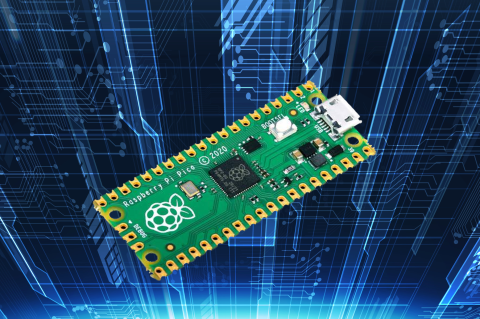What Would You Do With a 5 Day Chip Supply for PCBs?

Just when you thought the chip shortage was rolling over, the supply chain rears its ugly head and US OEMs find themselves in another precarious position. As of 25 January 2022, the US Commerce Department released results from a survey stating that semiconductor inventories at OEMs are down to less than five days worth of inventory for key components, as reported in a release on the department's website and in other media outlets. Companies reported in 2019 that they typically maintain 40 days worth of inventory for key components. These semiconductors, just happen to be some of the most challenging to acquire due to significant supply-demand mismatch, and the demand pressure is catching up to these OEMs.
Just how much excess demand is there in the market? The US automotive industry has been the poster child for shortages, but it really affects everyone. The group of survey respondents reported median component demand is 17% higher in 2021 than in 2019. This is driven partially by consumer electronics purchasing. Personal computers, laptops, and tablet were also major drivers in demand for semiconductor components throughout 2020 and 2021. Demand for PCs in 2021 grew by 14.8% YoY, causing demand to reach levels not seen since 2012. Clearly this is all pandemic related, but it brings fears that shortages will persist as many do not expect demand to wane so easily. Electrification trends, continued demand for mobile products and computers, and the continued push to make everything an IoT product will continue to put pressure on semiconductor manufacturers, OEMs, and small electronics companies.
The news raises two questions that designers should consider:
- Is the onshoring effort too-little-too-late, and will it even be effective long term?
- What can designers do in the mean time to prepare for supply chain shocks for critical products?
Will This Drive Greater Onshoring?
Whether every American semiconductor manufacturer will increase their collective footprint in the US or Europe is an open question. The report from the Commerce Department is revealing with respect to semiconductor manufacturing capacity. The report found that the majority of semiconductor manufacturing facilities are operating at or above 90 percent utilization. In particular, fabrication capacity is tied up in older technologies, such as legacy digital logic components used in automobiles and other products. Capacity is also being directed to analog chips used in power management, RF components, and optoelectronic components. That covers a broad swathe of components used in most designs, so it puts most designers at risk for some kind of supply chain disruption.
The obvious answer for the semiconductor manufacturers and their Western customer base is to build new fabs. In fact, the situation inspired the US Senate to act last year and pass legislation that would provide $52 billion in subsidies for chipmakers to build new factories. Unfortunately, the measure is still deadlocked in the House as Biden's Build Back Better plan looks to be dead in the water.
Now enter Intel, one of the oldest and largest manufacturers of advanced components. The company announced on January 21 that it plans to spend $20 billion to build two new semiconductor plants in Ohio by 2025. The company plans to invest in up to 8 new factories in the state with the intention for the area to become “the largest silicon manufacturing location on the planet,” said Intel CEO Pat Gelsinger in Time.

Despite investments from Intel, as well as advocacy from organizations like the Printed Circuit Board Association of America (PCBAA) and the Printed Circuit Engineering Association (PCEA), it's doubtful that eight factories will be enough to save the supply chain for Western companies.
My Reflections on Supply Chain Volatility
In some of my ongoing projects for clients, it always feels like there is something out of stock, or there is some kind of hoop I have to jump through just to get required quantities of chips. It always happens to the components you never plan for or expect. Gone are the days of uploading your BOM to a distributor's website and clicking a few buttons to complete your order. During the back half of 2022, every project used at least 2 distributors to fill parts orders, plus at 1 overseas broker charging 10x the authorized distributor price for a critical component.
My approach to dealing with the supply chain is to put ordering on the front end, not on the back end. We typically use the following set of strategies to help support client projects:
- Identify the main components early and get the end customer to lock in their selection. We'll then procure those before we begin the design. These components are usually the main MCU or processor that will drive the rest of the design.
- Most designs will include other less-advanced ASICs that don't have drop-in replacements. We also procure these early or suggest alternatives that can be procured without compromising performance requirements.
- Oftentimes, when those components are found, we'll identify alternative parts from the same product family or another product line, and we'll plan to design some variants with these alternates.
- Customers often have to make hard decisions about cost that could compromise performance. This normally happens if you have to go overseas and pay inflated prices. We identify these up-front and get the customer to commit to a course of action.
My advice is to communicate all of this to customers early and get them to make tough decisions before you jump head-first into a new design. The last thing you want to have happen is to create a beautiful PCB layout, only to find that you can't procure that one critical component that makes the entire design work. Until new fabrication capacity does come online, or until the cyclical nature of the semiconductor industry takes over, designers will have to continue dealing with these important decisions on the front-end to ensure a design can be produced on-time and on-budget.

When you need a comprehensive view of the PCB supply chain inside your design software, use the industry’s best PCB design tools in Altium Designer®. The Manufacturer Part Search panel and the ActiveBOM feature in Altium Designer You and your team will be able to stay productive and collaborate efficiently on advanced electronics designs through the Altium 365™ platform. Everything you need to design and produce advanced electronics can be found in one software package.
We have only scratched the surface of what is possible to do with Altium Designer on Altium 365. Start your free trial of Altium Designer + Altium 365 today.











